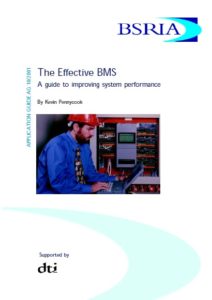The Effective BMS guide to improving system performance
The Effective BMS guide to improving system performance
The Effective BMS guide to improving system performance provides guidance on how to improve the effectiveness of Building Management Systems (BMS). In particular the guidance will help determine whether a BMS is performing poorly, and if so, how it can be rectified. The guidance covers both management and technical issues.
A properly implemented and operated BMS can:
- reduce energy consumption and CO2 emissions
- improve occupant comfort
- operate building services plant more effectively
- transfer data to other functions, such as monitoring and targeting software and maintenance management software.
Poorly performing BMS will fail to deliver these benefits. This can increase energy consumption and reduce occupant comfort.
This publication is intended to be used by facilities management/ maintenance staff along with staff employed by companies providing BMS support services.
You can also Read Fire Alarm Systems A Reference Manual
The Effective BMS guide to improving system performance Content
- Introduction
![The Effective BMS guide to improving system performance]()
- indicators of poor BMS performance
- improving the performance of a BMS
- BMS performance checking procedures
- energy benchmarks
- plant monitoring
- test equipment
- typical sensor accuracies
- location and installation guidance for sensors
- case studies
- specification considerations
The main objectives of a BMS are improved building services plant operation, reduced energy consumption, and better occupant comfort
conditions. In many instances a BMS can assist in providing more effective plant maintenance and at a lower cost. The following outlines some of the advantages that a BMS can provide. For a building tenant/operator:
- energy saving control functions leading to lower energy bills
- plant troubleshooting facility through the use of trend logs
- automatic generation of monitoring and targeting reports direct from logged data
- closer control of internal environmental conditions
- plant failures reported immediately
- maintenance teams coordinated centrally.
Maintenance staff may be hesitant to use a BMS, feeling that it is a specialist skill. Most modern BMS are relatively user friendly, however
to the inexperienced they can still appear daunting.
Download
The Effective BMS guide to improving system performance


Comments are closed.